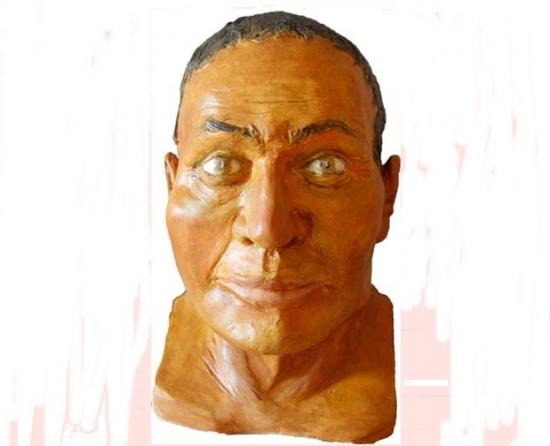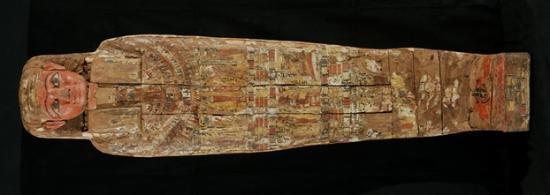A mummy switcheroo
Rossella Lorenzi
Source -http://news.discovery.com/history/ankhpakhered-tomb-120515.html

Reconstructed face of Wehem-ef-ankh, the coffin's usurper. Credit: Sabina Malgora/Mummy Project
Min, the ancient Egyptian god of phallus and fertility, might have brought some worldy advantages to his male worshippers, but offered little protection when it came to spiritual life.
Researchers at the Mummy Project-Fatebenefratelli hospital in Milan, Italy, established that one of Min's priests at Akhmim, Ankhpakhered, was not resting peacefully in his finely painted sarcophagus.
"We discovered that the sarcophagus does not contain the mummy of the priest, but the remains of another man dating between 400 and 100 BC," Egyptologist Sabina Malgora said.
According to the researchers, the finding could point to a theft more than 2000 years ago. The relatives of the mysterious man may have stolen the beautiful sarcophagus, which dates to a period between the 22nd 23rd Dynasty (about 945-715 BC), to assure their loved one a proper burial and afterlife.

Ankhpakhered's painted sarcophagus. Credit: Sabina Malgora/Mummy Project
"It's just an hypothesis. However, this was a rather common practice, especially during periods of economical and political crisis, when the necropolis were left without much surveillance," Malgora, co-director of the Mummy Project with Luca Bernardo, director of Maternal and Child Unit Operations at the Fatebenefratelli hospital, told Discovery News.
Indeed, by the end of the 20th Dynasty, tomb robbery was such a serious problem at Thebes (the modern Luxor) that royal mummies and their relatives were secretly moved to a secure hidden tomb in Deir el-Bahri, now known as Theban Tomb (TT) 320.
Discovered near the end of the 19th century, the Deir el-Bahri cache revealed an extraordinary array of mummified remains belonging to more than 50 kings, queens and nobility.

The wrapped mummy. Credit: Sabina Malgora/Mummy Project;
Kept at the Archaeological Museum in Asti, where it arrived in 1903 from a private collection, the sarcophagus boasted a mysterious history -- it is not known how it arrived to Italy -- and a puzzling mummy.
"It had a simple bendage with no amulets at all. We know that a high priest would have been buried differently," Malgora said.
Finally, CTscan images revealed that inside the wrappings rested a skeleton placed on a reed support. This suggests that the body was recovered some time after the death, placed on a kind of stretcher and then wrapped.
While the fate of Ankhpakhered's mummy remains unknown, Malgora and colleagues have managed to shed new light on the man that for more than two millennia usurped the priest's coffin.

Inside the wrappings: a skeleton resting on a reed support. Credit: Sabina Malgora/Mummy Project;
Named by the researchers Wehem-ef-ankh, the one who comes back to life, the man died at about 40, and was 5 feet 9 inches tall -- quite old and tall for the time.
He did not use drugs, did not suffer from any particular disease, and did not die from any violent or traumatic event.
Some 2950 images from the CT scan made it possible to reconstruct a 3D life size image of his skull. Carried by Jonathan Elias, director of the Akhmim Mummy Studies Consortium, the subsequent face reconstruction revealed a man with a prominent nose, a slightly asymmetric eye and eyebrow and a slightly hollow left cheek, caused by the lack of some teeth.
"He had nothing to do with a high priest. He was a hard worker. His knees show signs of wear and tear, as if he was carrying weight or stones," Malgora said.